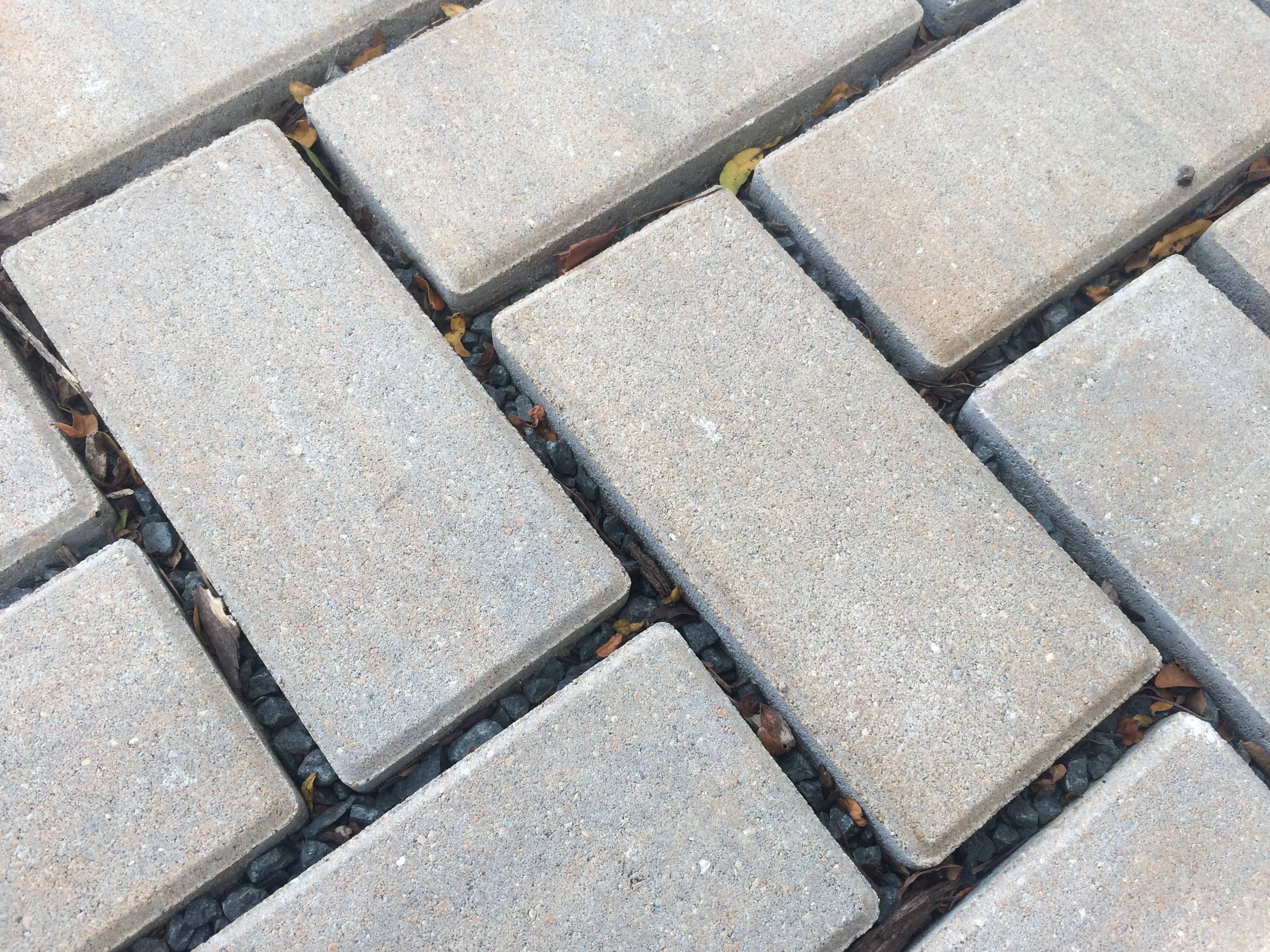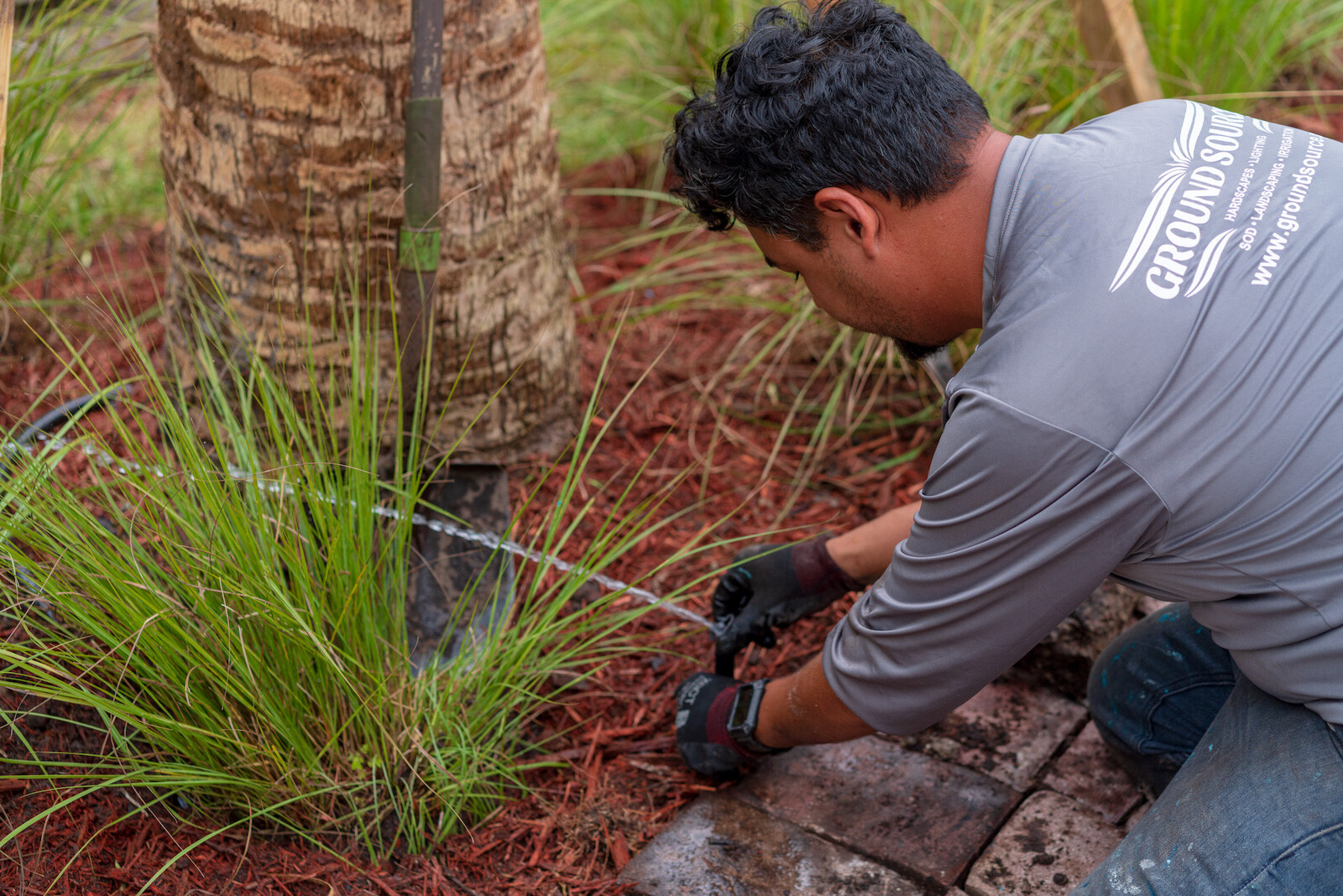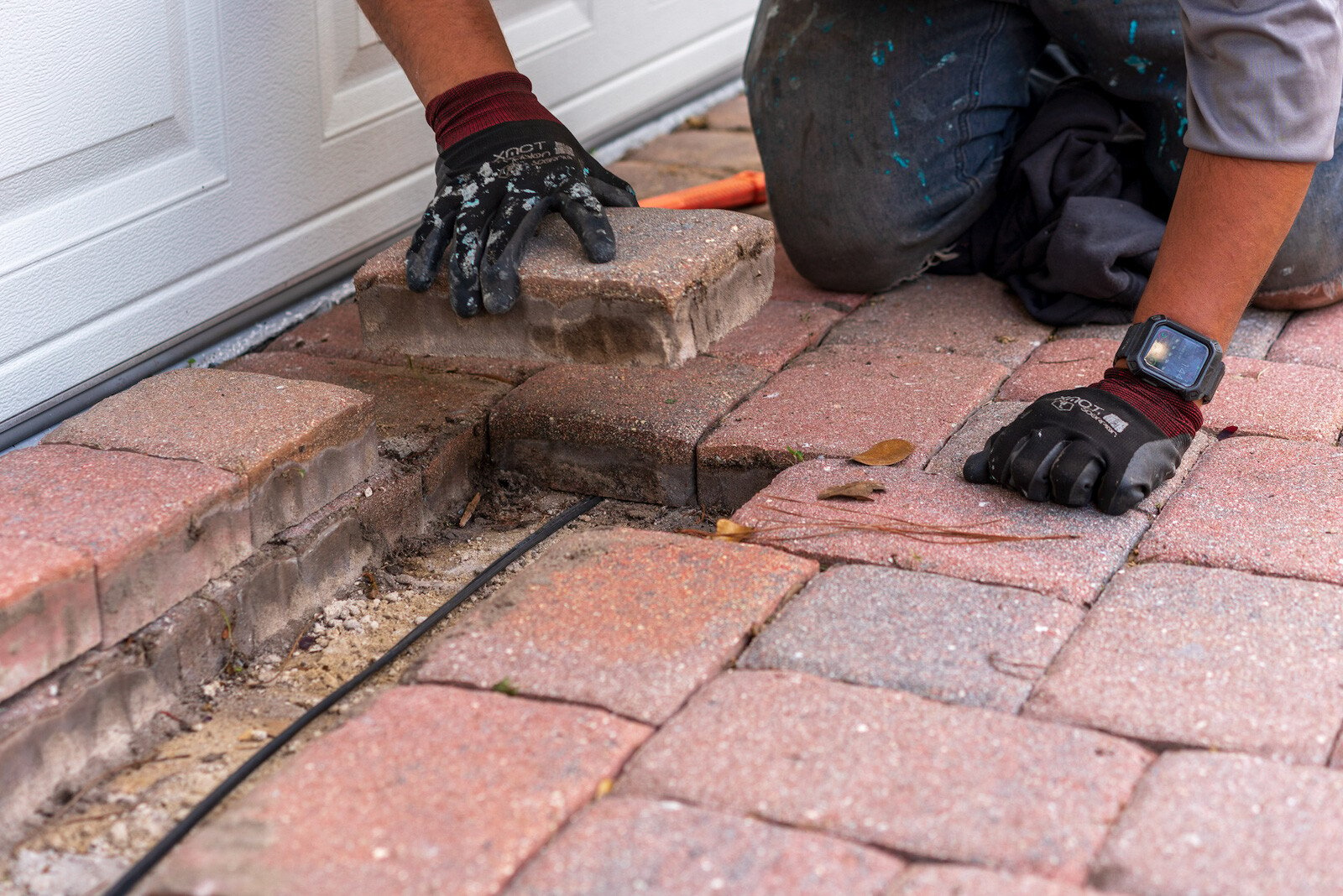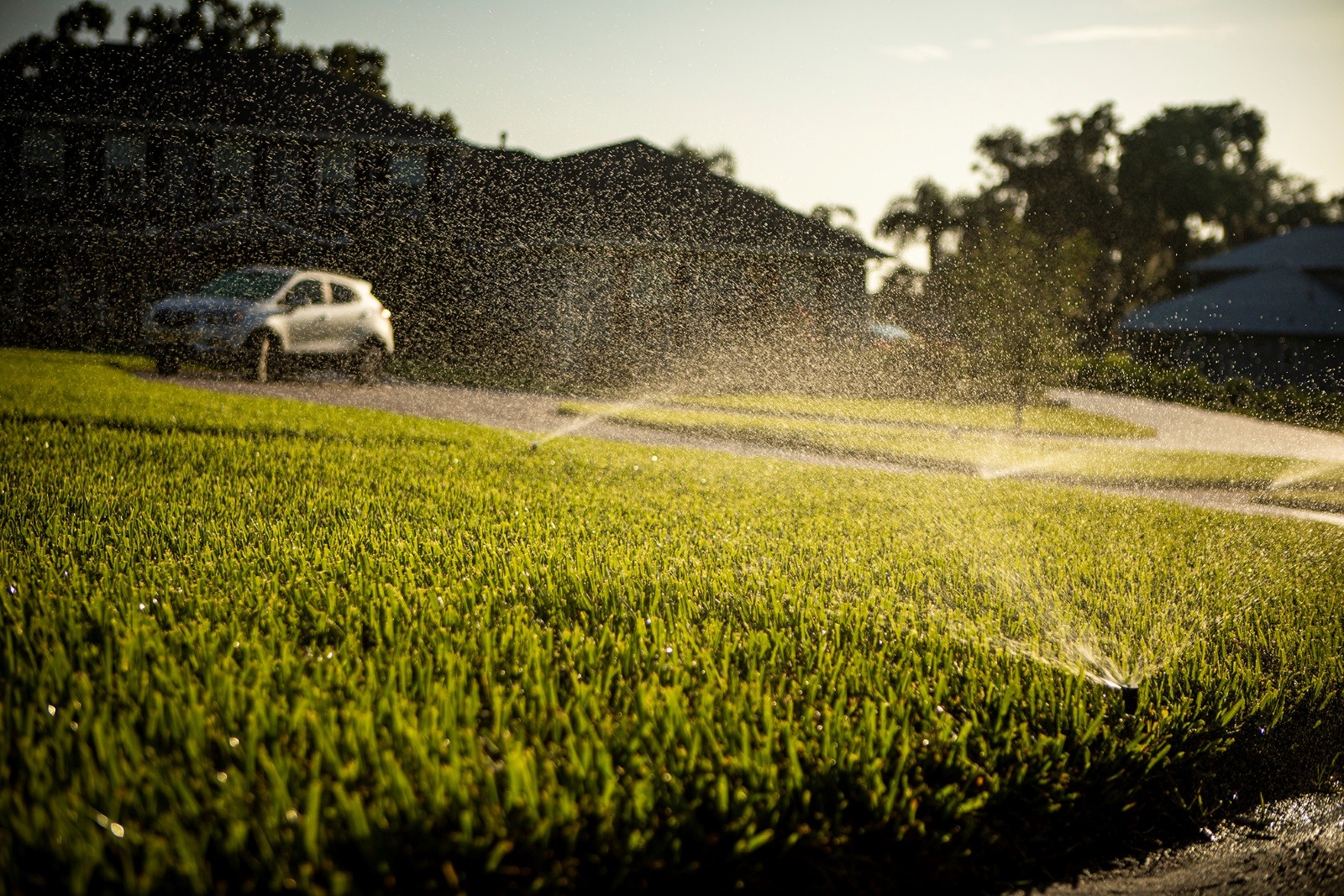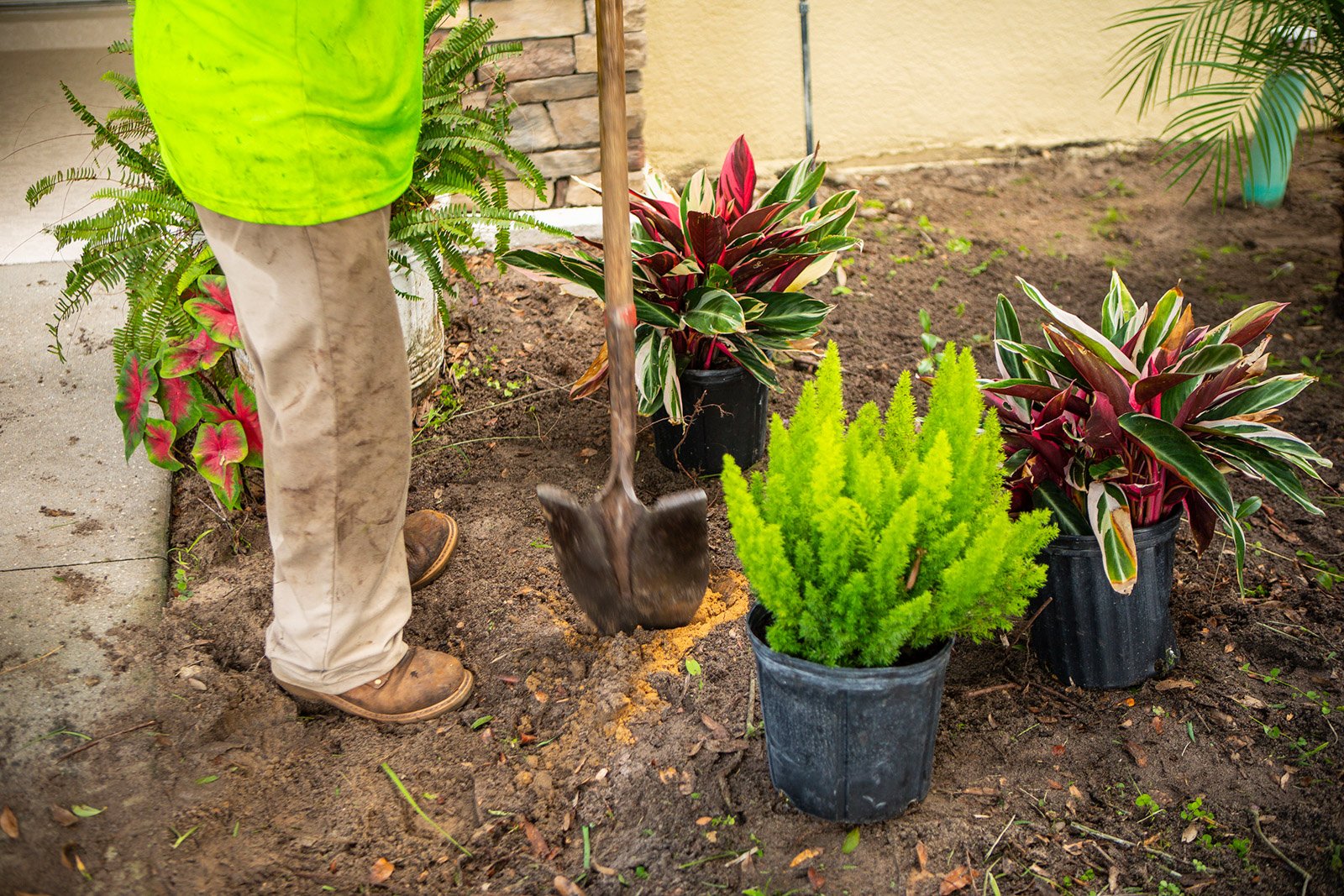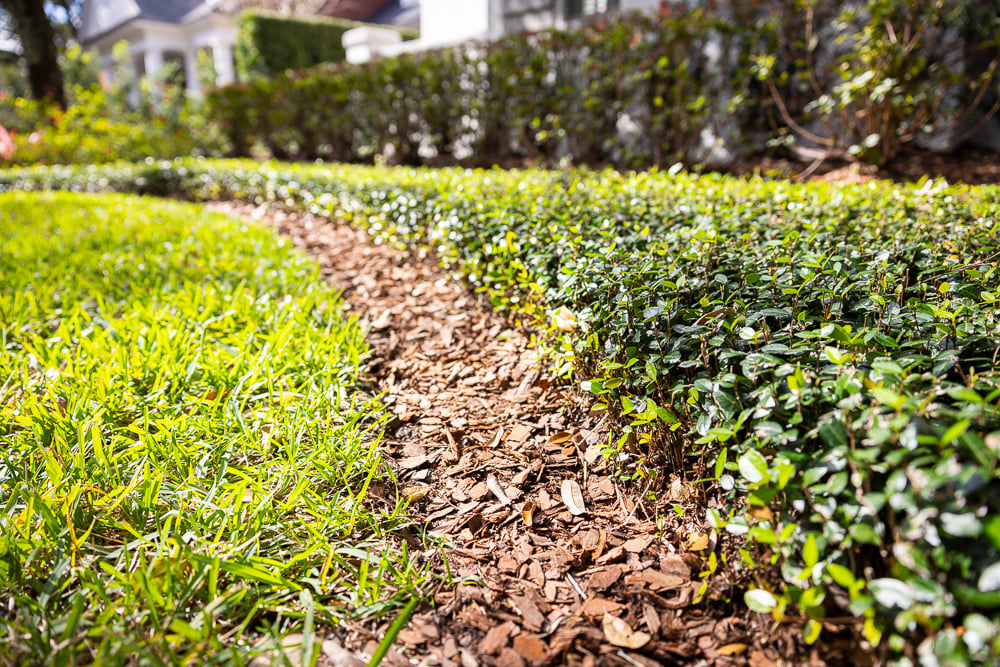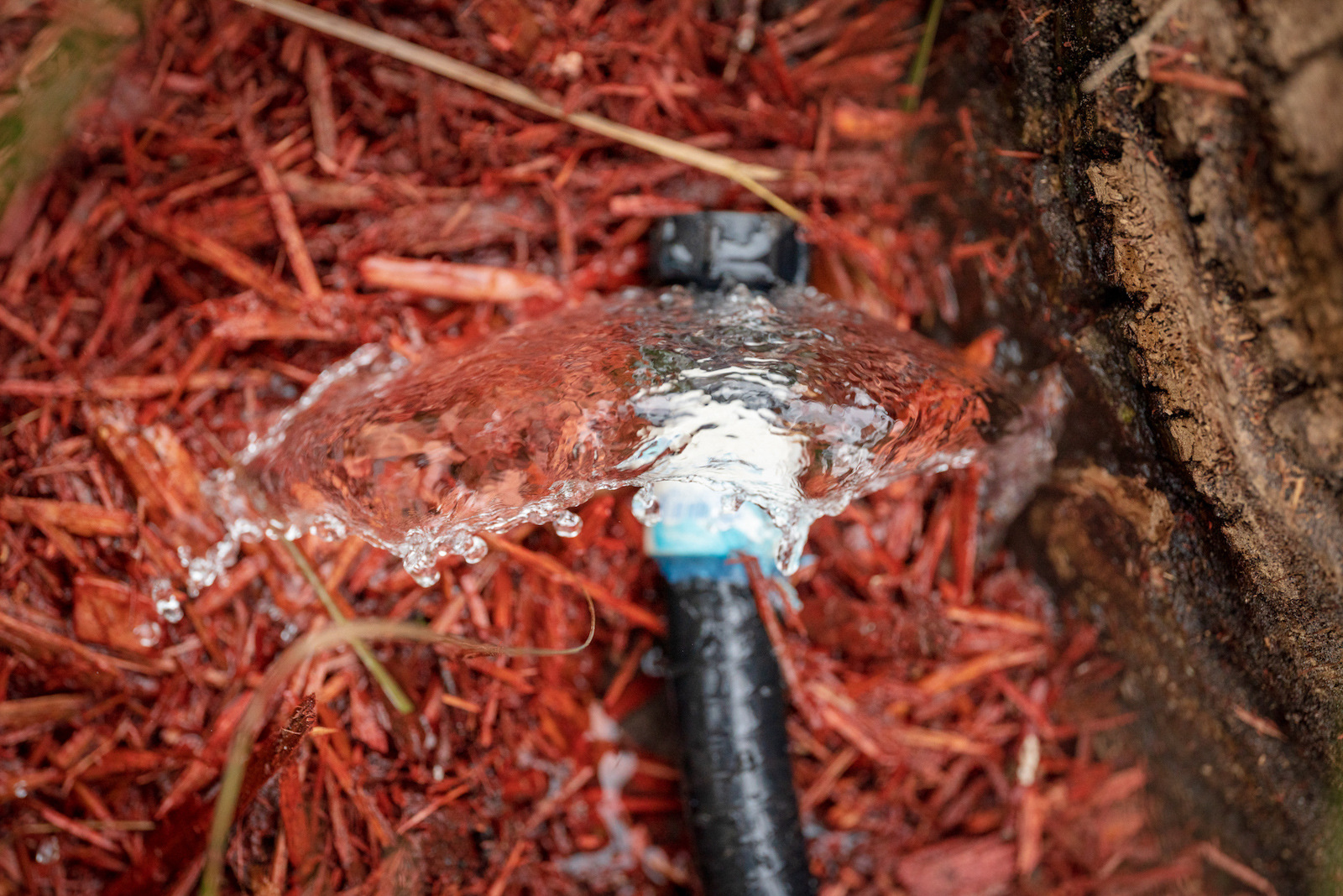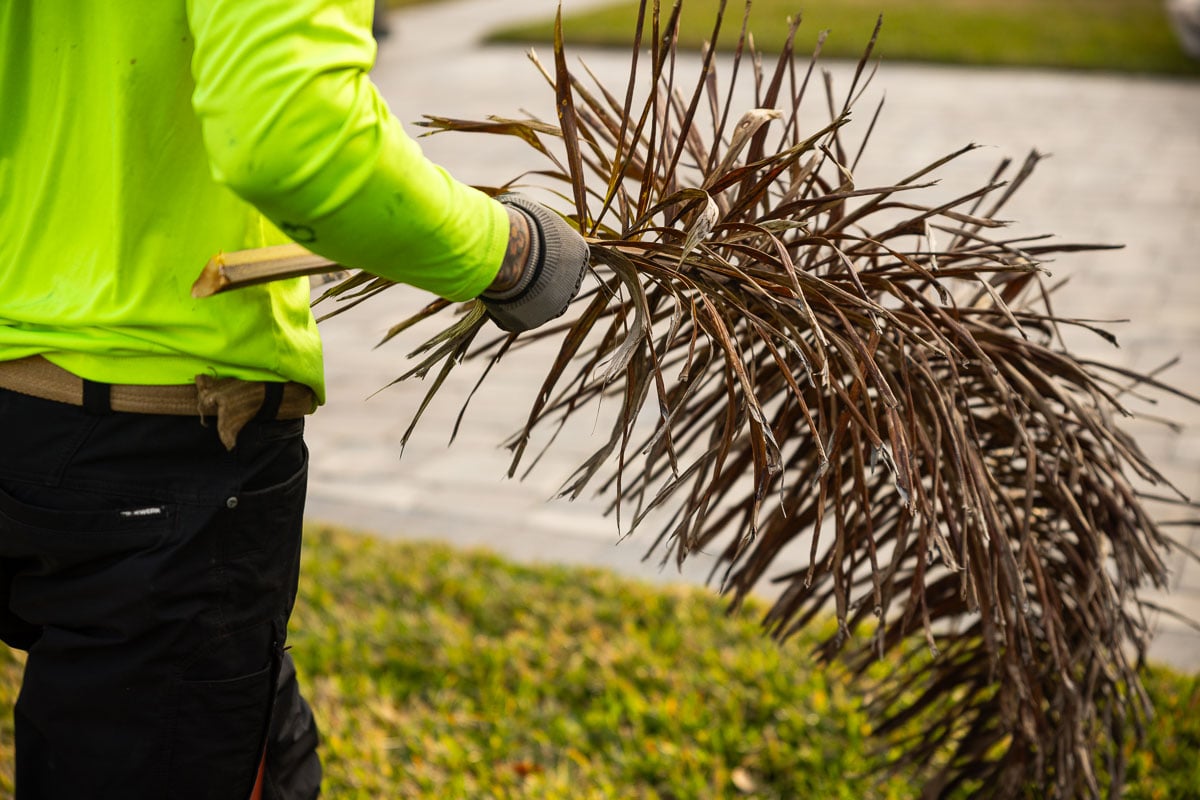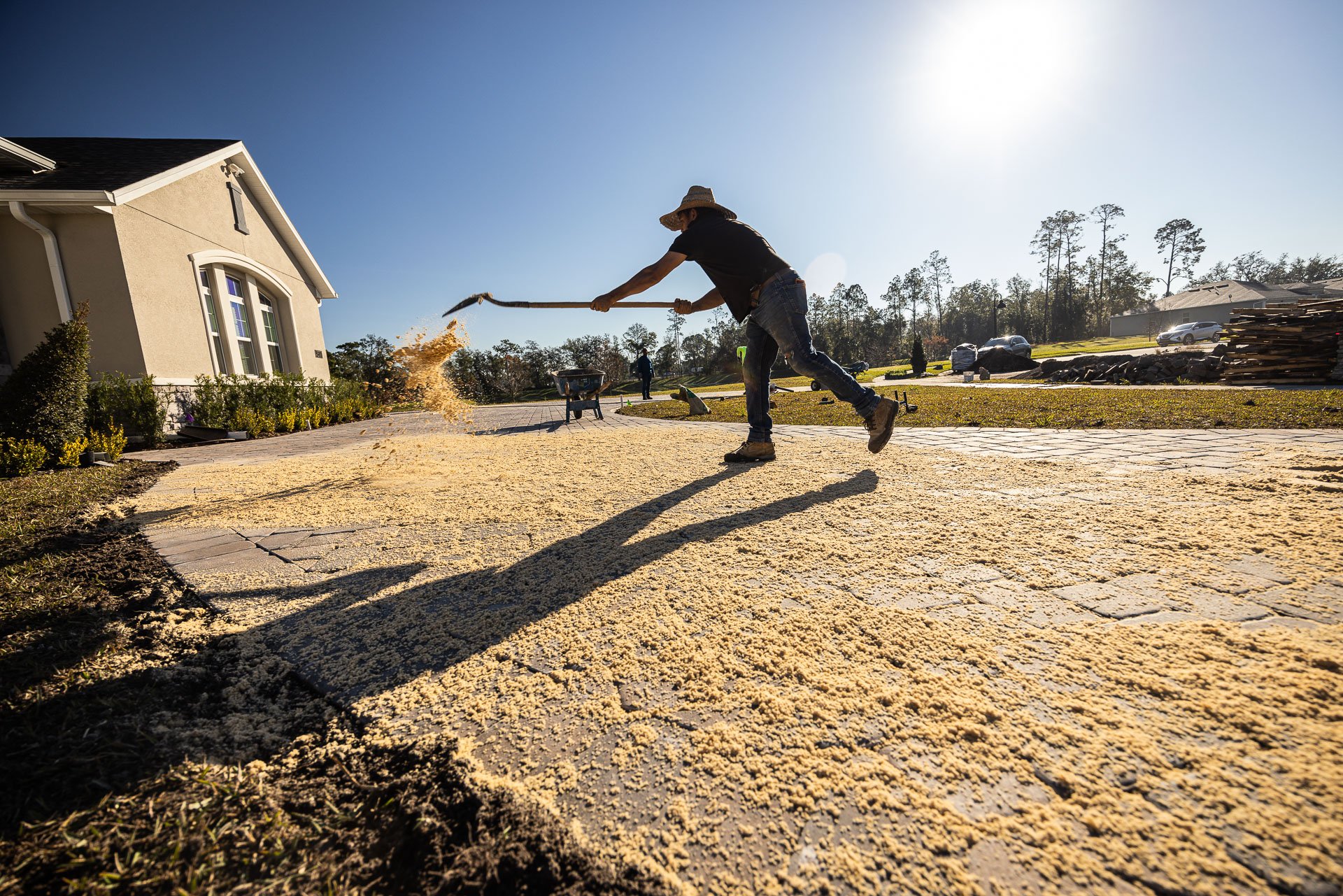When you live in Central Florida, you learn to expect a little rain – okay, a lot of rain. Between daily afternoon storms and long wet seasons, our landscapes are constantly challenged by water buildup and poor drainage.
Driveways turn into puddles, patios stay slick, and lawns struggle to stay healthy when water has nowhere to go.
That’s where permeable pavers come in.


